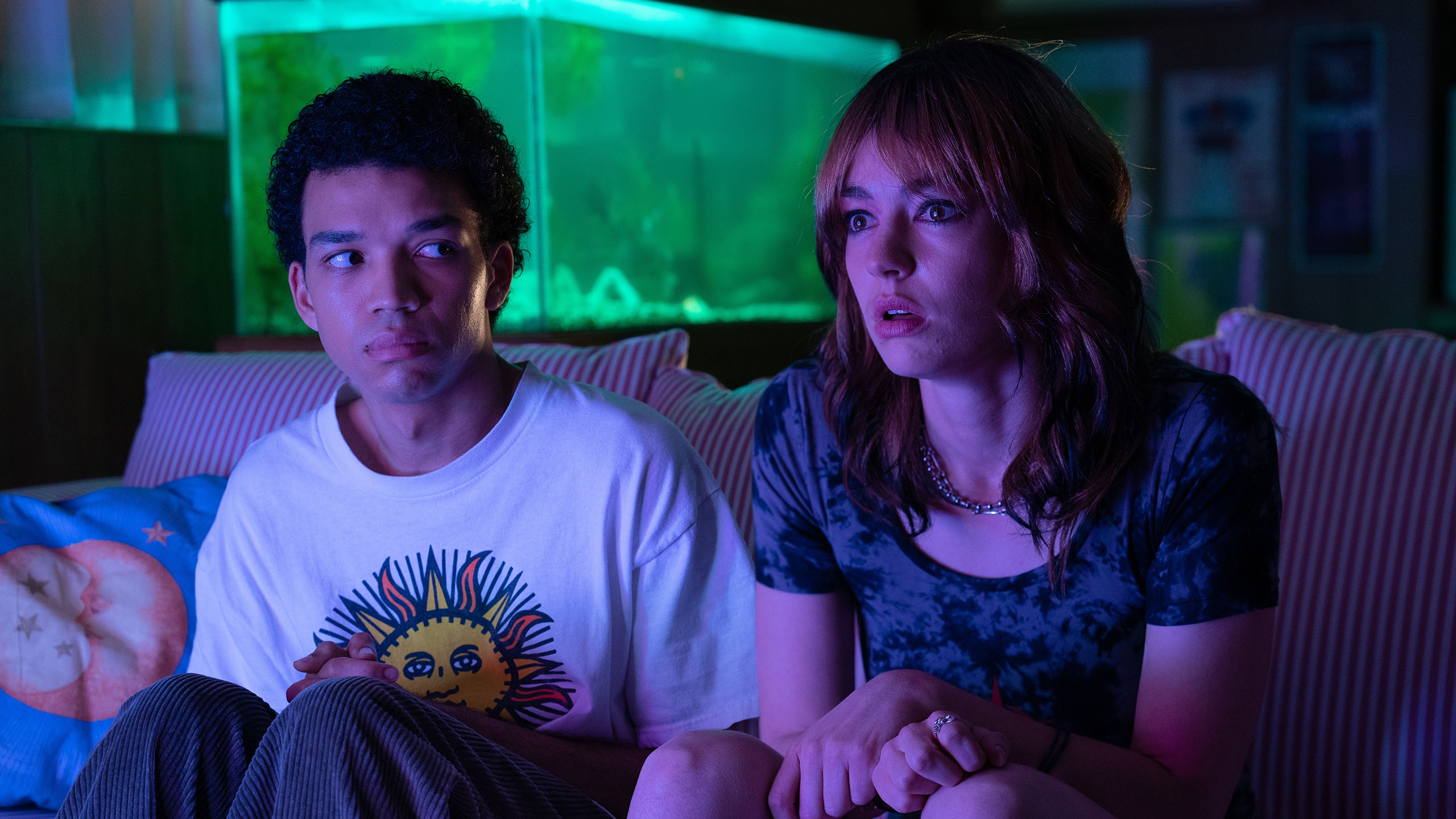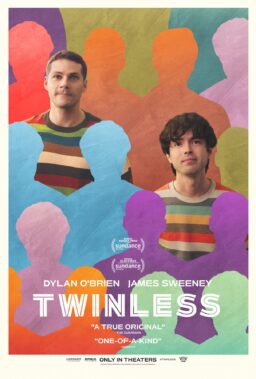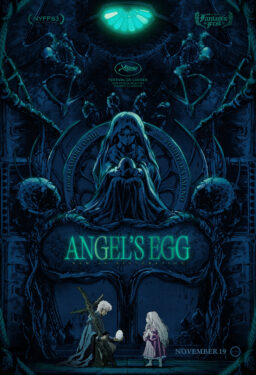It’s back! With more people on the ground due to a more restrictive online portion that starts next week (and doesn’t include most of the premieres), this year’s Sundance Film Festival already feels the most crowded and buzzy since 2020. Sundance took a hit from COVID, going virtual in 2021 and 2022 before returning in a hybrid form in 2023. The hybrid approach has been adjusted to try to bring people back to Utah, and it seems to be working. The theaters I attended on opening day were full of receptive crowds, and at least one of them saw a phenomenal film.
That lucky crowd was the one at Jane Schoenbrun’s “I Saw the TV Glow,” confirmation that the work they did on “We’re All Going to the World’s Fair” two years ago was no fluke. This feels like the beginning of an influential and important career, the work of an artist who is completely fearless in expressing their identity through their art. And what really elevates “I Saw the TV Glow,” other than Schoenbrun’s stunning visual and aural confidence, is the blend of the specific and the universal. This is a defiantly strange film, and yet it reaches into something relatable at the same time about identity, anxiety, culture, and connection. It’s surreal in a way that feels true, reminding me of David Lynch’s work in how it operates on an emotional and almost instinctual level instead of a literal one.
At its base, “I Saw the TV Glow” is about two young people who become obsessed with a TV show called “The Pink Opaque.” Sort of a hybrid of “Buffy the Vampire Slayer” (complete with the same font) and Nickelodeon’s “Are You Afraid of the Dark?,” “The Pink Opaque” is one of those shows that comes on last in a young adult block on TV, pushing the boundaries of genre a bit before the network goes to black and white reruns. The fictional show in the film stars the great Helena Howard as half of a pair of young women who have a sort of psychic connection, sometimes fighting off a monster of the week and sometimes fleeing the shows “big bad,” Mr. Melancholy. It’s the kind of show that young people get obsessed with, young people like Owen (a vulnerable Justice Smith) and Maddy (a fantastic Brigette Lundy-Paine).
A young Owen (Ian Foreman) in seventh grade sees a commercial for “The Pink Opaque” and becomes captivated by it, but his distant father (Fred Durst … yes, that one) and loving mother (Danielle Deadwyler) won’t let him stay up late enough to watch it. When he sees Maddy reading an episode guide to the show, he forms a bond with her, sneaking out to watch an episode one night, and obsessively watching the VHS tapes of the show that she leaves for him to watch.
That’s the skeleton onto which Schoenbrun tells a story of obsession and finding yourself through something and someone else. Schoenbrun made clear in the intro that the film was being written as they were finding their own queer identity, and it’s easy to see the theme of feeling out of place in your body and in the world throughout “I Saw the TV Glow.” It’s not just about repressed identity as much as those moments when the world shifts into something new. It can be as simple as a TV show that changes your worldview or as complex as gender identity. But what feels special about “I Saw the TV Glow” is how many layers it has to unpack. Two people could have very different, valid readings of what this film is “about.”
One thing that’s for sure is that it’s a stunning technical achievement. One of the loudest screenings I’ve ever seen at Sundance, it’s a film with tech elements designed to rattle you. And Schoenbrun’s visual acumen is breathtaking with their lighting, framing, and editing choices. This film feels like an emotional exhalation, but there’s a captivating aesthetic here that really turns that heartfelt feeling into art.

On the complete other end of the spectrum in terms of storytelling approach is Josh Margolin’s charming and sweet “Thelma,” a film that gives 93-year-old June Squibb (“Nebraska”) her first starring role. On the one hand, this is a relatively straightforward “Sundance Comedy,” but it elevates itself through heartfelt characters, a sharp sense of humor that never turns mean, and honest affection for the human condition. We’ll all get old. We’ll all lose those we love. Let’s make the most of it. Call your grandma.
Inspired by real events, “Thelma” is about a woman named Thelma Post, who is still sharp enough to live on her own but relies on assistance from her beloved grandson Danny (Fred Hechinger). In the opening scenes, he helps her use her computer and insists she wear a FitBit so he can monitor her. From the very beginning, Margolin defines the loving, gentle relationship between these two in a way that’s remarkably lovable without being twee. They listen to a recording of Thelma’s deceased husband and watch a “Mission: Impossible” movie together, marveling at Tom Cruise’s stunt work. It will become an inspiration for the next adventure in Thelma’s life.
That starts when she gets a call from someone claiming to be Danny. He’s been in an accident, he’s in jail, and his attorney needs $10k in cash now. Thelma drops it in the mail, pretty quickly discovering that she’s been conned. Thelma’s daughter Gail (Parker Posey) and son-in-law Alan (Clark Gregg) are startled enough to wonder if it’s time that Thelma moves to an assisted living facility like her friend (Richard Roundtree, in a wonderful final performance). Thelma decides action must be taken and seeks revenge on those who scammed her. It’s too bad she can’t drive on her own.
“Thelma” is such a lovely little film largely because of how much Squibb brings to it (including doing all her own stunts). It’s a deftly wonderful performance that holds back a film that feels like it could have easily turned the elderly into either easy targets for humor or maudlin sentimentality. Squibb knows the tough tonal tightrope here of realism and goofy humor, and she nails it. And Margolin smartly weaves themes through “Thelma” without pounding them, such as when Thelma visits a woman who doesn’t have a Danny in her life. Thelma is a strong, confident woman, but this is also a film about companionship, and those relationships like grandmother and grandchild that can define us. People are going to love it. See it with someone you love.

I have a feeling a lot of people will also love “Freaky Tales,” but sometimes a critic lands in the minority. I so much wanted to like this goofy flick that’s brazenly inspired by John Carpenter, Walter Hill, David Cronenberg, and other early ‘80s genre icons, but it’s never as sharp as it needs to be to work. For years after the breakthrough of Quentin Tarantino, Sundance premiered films that revealed how hard his interconnected story structure in “Pulp Fiction” was to pull off, and it feels almost like “Freaky Tales” is a callback not to “Pulp Fiction” but the pale copies of it. There are moments that are undeniably fun, but the script needed another punch-up for humor and style, and the visuals needed to understand that what masters like Carpenter and Hill pulled off in their genre flicks was tougher than it looked.
“Freaky Tales” takes place in 1987 Oakland, unfolding in four chapters with characters that cross over from one to another. The first is the tale of a group of punk rockers who are being regularly assaulted by Nazi skinheads, leading to a fight sequence wherein in the peace-loving punks fight back. (The theme between all four is undeniably the underestimated underdog.) The second tale center a pair of young female rappers who go by the name Danger Zone (Dominque Thorne & Normani, nearly walking off with the movie), as they battle rap against Too Short. The third chapter will get the most attention as it stars Pedro Pascal as a guy who shakes down people who owe his boss money on the worst day of his life. It’s the grittiest and most Tarantino-esque of the bunch. The final segment has a “Kill Bill” energy as Golden State Warriors legend Sleepy Floyd battles the crime lord of the Bay, played by a sneering Ben Mendelsohn.
Writer/directors Anna Fleck and Ryan Boden have escaped the restrictive MCU machine with a desire to get a little wacky. Animated sequences, funky title cards, unexpected needle drops (there are three in the final battle alone)—this is a film with a lot going on. Through that sheer excess, it works in bursts—a choice made by Pascal, Dominique Thorne & Normani, a narrative twist, an explosion of gore—but I can’t shake the feeling that it fundamentally doesn’t formally understand a lot of the films to which it’s paying homage. It’s freaky, sure, but never in a way that feels truly unexpected, dangerous, or clever. It’s empty calories when the films it’s mimicking were full meals.












